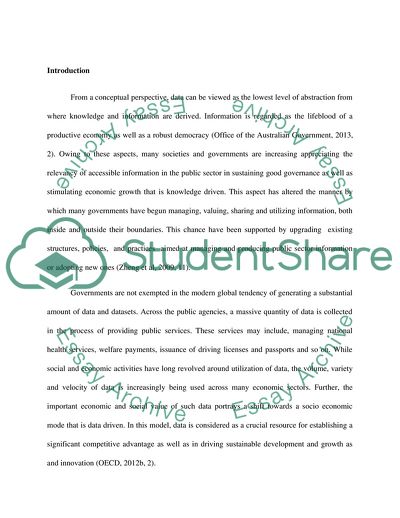Cite this document
(Sharing of Data across Government Agencies Report Example | Topics and Well Written Essays - 3000 words, n.d.)
Sharing of Data across Government Agencies Report Example | Topics and Well Written Essays - 3000 words. https://studentshare.org/sociology/1815491-to-imporve-government-services-to-citizens-data-must-be-shared-between-agencies-but-to-share-these-data-is-to-damage-citizenship-to-what-extent-can-this-statement-be-accepted
Sharing of Data across Government Agencies Report Example | Topics and Well Written Essays - 3000 words. https://studentshare.org/sociology/1815491-to-imporve-government-services-to-citizens-data-must-be-shared-between-agencies-but-to-share-these-data-is-to-damage-citizenship-to-what-extent-can-this-statement-be-accepted
(Sharing of Data across Government Agencies Report Example | Topics and Well Written Essays - 3000 Words)
Sharing of Data across Government Agencies Report Example | Topics and Well Written Essays - 3000 Words. https://studentshare.org/sociology/1815491-to-imporve-government-services-to-citizens-data-must-be-shared-between-agencies-but-to-share-these-data-is-to-damage-citizenship-to-what-extent-can-this-statement-be-accepted.
Sharing of Data across Government Agencies Report Example | Topics and Well Written Essays - 3000 Words. https://studentshare.org/sociology/1815491-to-imporve-government-services-to-citizens-data-must-be-shared-between-agencies-but-to-share-these-data-is-to-damage-citizenship-to-what-extent-can-this-statement-be-accepted.
“Sharing of Data across Government Agencies Report Example | Topics and Well Written Essays - 3000 Words”. https://studentshare.org/sociology/1815491-to-imporve-government-services-to-citizens-data-must-be-shared-between-agencies-but-to-share-these-data-is-to-damage-citizenship-to-what-extent-can-this-statement-be-accepted.


